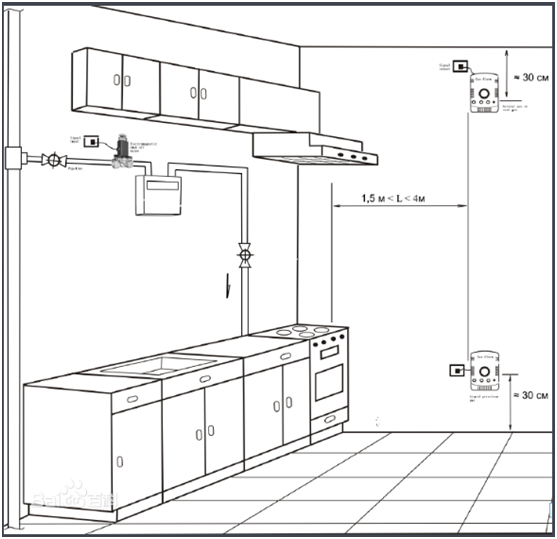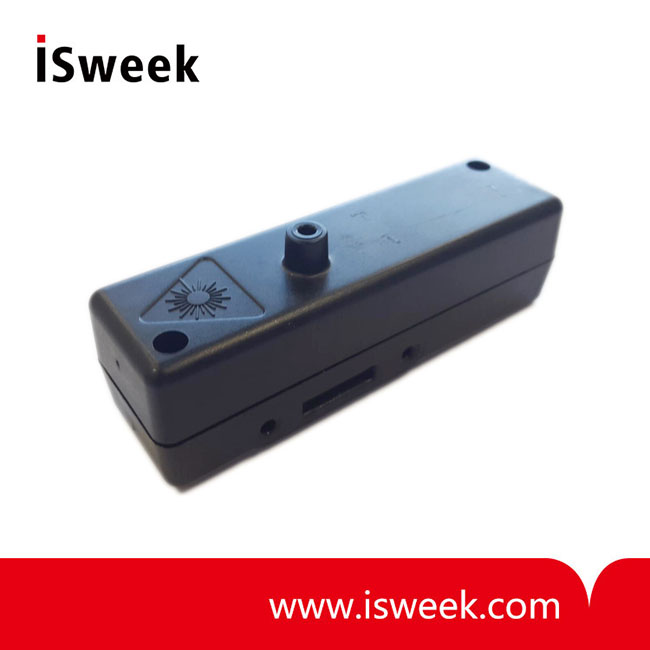In recent years, gas alarms are more or less used in office spaces, smart homes and factories. As fuel of natural gas and coal gas, methane is widely applied for civil or industrial use. A methane alarm is to measure the concentration of methane gas and make alarm when it reaches explosion point or a preset value, in order to drive ventilation, cut-off and spray system to prevent accidents like explosion, fire or poisoning. Now let’s see the correct installation method of methane alarm, so that it can protect our safety in daily life.

Where to Install Methane Alarms?
The correct position to install a methane leakage alarm is: a place with good ventilation and 1.5 meters from the gas source.
- natural gas, city gas, CO and smoke is lighter than fresh air, so if the alarm is used to detect these gases, it should be installed at 0.3m below the ceiling.
- liquefied gas is heavier than air, so the alarm should be installed at 0.3m above the floor. If the alarm is to detect natural gas or CO, it should be installed at 1.4-1.7 m above the floor, since CO is toxic gas which will cause lethal accident even with a little amount.
A methane leakage alarm should not be installed in the following places:
- Inside a closet or places where ventilation is hard; and places where can be easily smoked by lamp black.
- An environment with too much dust or suspended particles which may cause false alarm of the detector.
When Not to Install Methane Alarms?
A methane leakage alarm had better not to be installed in following periods:
- When the painting of a room is not completed
- When the decoration of a room has just finished and general ventilation is less than 5 days
- When there are new wooden furniture inside a room and general ventilation is less than 3 days
- When sprayed insectifuge, air freshener, hair spray or gel is used in a room and general ventilation is less than 4 hours
In the cases above, alarms should not be installed. If there are already alarms, please cut their power off and cover them with plastic bags or similar materials until the room has enough ventilation. Otherwise, the alarm may be damaged or make a false alarm (make an alarm when there is no gas leakage), or its yellow light may blink, and the alarm may be broken.
- The height of alarm installation should be 160—170cm for convenient maintenance.
- As a safety instrument, the alarm is equipped with sound and light display function. They should be installed in a place where it can be easily seen or heard, so that the technicians can eliminate a hidden danger in time.
- There should not be strong magnetic fields around the alarm (like high power motor or transmitter) which can interference the normal operation of the instruments.
- For different density of various gases, the installation position of indoor probe is different accordingly. When the density of gas to be detected is greater than air, the probe should be installed at 30cm lower than the ceiling facing downward; when the density of gas to be detected is less than air, the probe should be installed at 30cm above the floor facing upward.
Recommended Methane Alarms
Here we ISWeek would like to recommend some methane leakage alarms which are widely used in smart homes.
The first recommendation is Figaro combustible gas sensor/ natural gas sensor – TGS2611. TGS2611-C00 is the best choice for gas leakage detection because it is of small size and excellent response. TGS2611-E00 is equipped with extra filter casing to eliminate the interference of alcohol, so it has high selective sensitivity to methane gas. It is especially suitable for complex gas environment and high requirements in homes, making it an ideal choice of household gas leakage detection sensor.
In order to minimize the cost of development and manufacture, so as to make it more convenient for users to produce domestic natural gas alarm, we recommend a methane gas detecting pre-calibrated module AG-2-CH4-MA2611(D).
AG-2-CH4-MA2611(D) adopts TGS2611-E00 sensors and coordinates an improved classic circuit to measure the concentration of methane gas. It is pre-calibrated by Figaro’s high accuracy calibration equipment and manufactured with mature conditioning progress.







